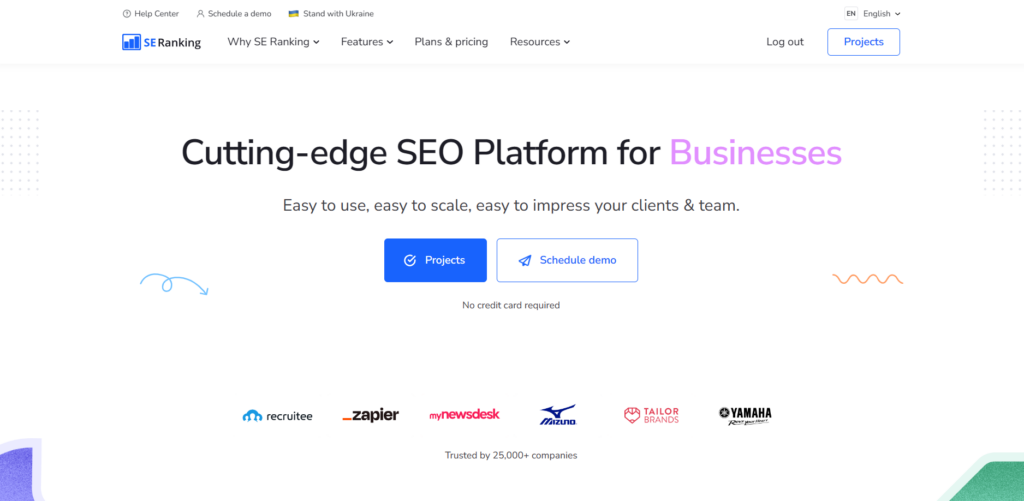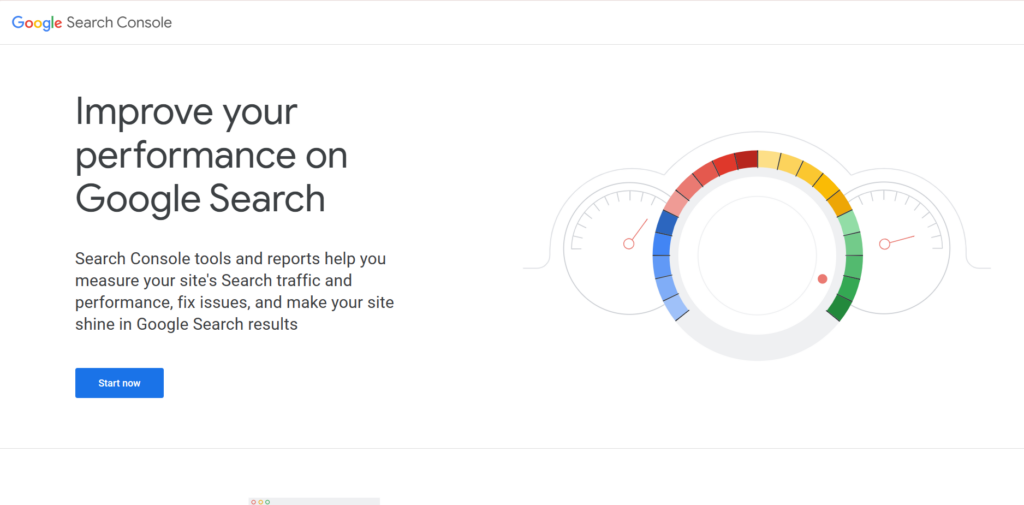
Dominating search engine results and building online traffic largely boils down to a single, influential factor: keywords. Optimizing your pages for the right keywords is what drives your SEO, leading potential customers to your virtual doorstep.
But a page ranking at the top for your targeted keywords can disappear from the first page in a split second–especially if you’re in a cut-throat industry. So how do you even manage something that can fluctuate so dramatically?
The answer is simple: you need to know how to track keyword rankings. To do that, I’ve outlined the best keyword tracking techniques, top-tier tracking tools, and indispensable tips here for you to use.
Understanding Keyword Tracking
Keyword tracking is exactly what its name implies: keeping track of the position your pages are for your targeted keywords.
In SEO, keywords are at the heart of your website strategy. It’s what we optimize for. And if we do it right, you will see your pages climb towards the first page of the search results,
Once you’re there, it’s great–it’s going to drive tons of qualified users towards your pages. But just because you get there doesn’t mean you’re going to stay there forever. You will, inevitably, see fluctuations in your rankings.
That’s where knowing how to track keyword rankings comes in. It gives you a snapshot of where your page used to be, and where it’s at now. And that’s going to be the foundation of your strategy to either recover or improve your rankings moving forward.
Why Is Tracking Keyword Rankings Important?
If you need some more persuading to start learning how to track keyword rankings, you should know that it helps you:
- Manage your most important, value-driving keywords.
- Track ranking developments, and identify how your keywords perform through historical data.
- Evaluate your performance against competitors.
- Set keyword ranking goals for your website.
- Find new keyword opportunities for your website.
- Identify which keywords (and associated pages) need to be further optimized.
- Reveal sudden drops in ranking, which can point to issues that need to be addressed.
In short, keyword tracking provides valuable data and insights into the way your website ranks for certain keywords. This then helps you adjust and improve your SEO strategies.
What Causes Changes in Keyword Rankings?
There are a few things that could trigger changes in your website’s keyword rankings–some in your control, some out of it.
- You or other websites publish new content targeting that keyword.
- You gain or lose backlinks from other websites.
- You make significant changes to your pages’ title tags, meta descriptions, headings, et cetera.
- You add or remove content to your existing pages.
- Google updates its algorithms–we just recently had an August 2023 Broad Core Update and a September 2023 Helpful Content Update.
The cause for your rankings improving or dropping can be one or a combination of things in this list. That’s why consistent tracking is important.
When you can pinpoint when your rankings moved, you can match it to whatever you did on your website on the same day (or week). Then you can determine if these changes should be kept, or if it needs to be reverted.
If you think you’re dealing with the after-effects of the Broad Core Update, here’s how to recover your rankings, as well as an SEO checklist for optimizing after a core update you can use.
How to Track Keyword Rankings
Keyword rank tracking is a long, never-ending process. Here’s a step-by-step guide on the process:
Keyword Research
To start, it’s important to remember that your focus should not merely be on selecting relevant keywords but on understanding your audience’s search behavior.
This allows you to choose keywords that align with what you offer and your audience’s search intent, subsequently leading to better results.
Begin by understanding your target audience, their interests, search behavior, and language. Gaining these insights forms a foundation that allows you to select keywords that mirror their search patterns.
Then, use keyword research tools like Google Trends, Keyword Generator, or SEMrush. These tools offer vital data on the popularity and competitiveness of potential keywords within your market area.
Webmaster’s Note: I have a full keyword research and optimization guide that you can follow for this step. And, if you’re just about to start on your SEO journey, I also have a guide on how to do keyword research for new websites.
Implement Keywords in Your Content
The next move is to strategically and naturally incorporate your chosen keywords within your content. They need to be in your titles, subheadings, URLs, meta descriptions, and the body of your content for the best results.
Use a Keyword Ranking Tracking Tool
With keywords in place, the next step is to use keyword ranking tracking tools like SERanking or Google Search Console.
These tools keep tabs on how your chosen keywords are performing in search engine results, day by day. This data will help you adapt and adjust your SEO strategy when needed.
Analyze Keyword Performance Regularly
Keep in mind that keyword tracking isn’t a one-and-done process. It’s an ongoing cycle that requires consistent attention.
Regularly review the tracking data to stay on top of your keywords’ ranking status and to observe changes over time.
Use these insights to adjust your keywords as necessary. Depending on their performance, you may need to use different variations, remove those that are underperforming, or incorporate new ones that are trending in your industry.
Best Tools for Tracking Keyword Ranking
There are a few tools that are effective when it comes to keyword tracking, for seasoned SEO experts and beginners alike. Based on my experience, SEMrush, Google Search Console, and SE Ranking are the best tools I have used for this purpose.
SE Ranking

SE Ranking is widely used for keyword rank tracking. This versatile tool also offers a full SEO suite, including website audits, backlink monitoring, and competitor research, among other features.
Pros: Accurate rank tracking, comprehensive SEO analysis, user-friendly, affordable.
Cons: Some reports can be slow, you may need to update the rankings from time to time.
SEMrush

This comprehensive digital marketing tool helps with various aspects related to SEO, including keyword tracking. SEMrush is popular for its ability to perform keyword research, competitor analysis, and run SEO audits on your blog.
Pros: Comprehensive SEO features, excellent reporting functions.
Cons: Quite complex for beginners, higher pricing.
Google Search Console

A free tool offered by Google, the Search Console provides invaluable insights into what search queries your website is showing up for. It is essential for identifying issues and opportunities for website optimizations.
Pros: Free, provides direct data from Google, integrates with other Google products
Cons: May be too technical for beginners.
The tool that’s best for you will depend on your SEO needs, budget, and familiarity level with this kind of tool. SEMrush, Google Search Console, and SE Ranking each offer valuable features and data to track your keyword rankings effectively and power your SEO strategy.
Tips and Best Practices for Keyword Tracking
Aside from using the right tool, successful keyword tracking relies on following best practices and techniques. Here are some points to consider:
- Regular Monitoring: Rankings change every day–so regularly check your keywords to see where your website falls. This will help you stay up to date with keyword and search algorithm trends, and make adjustments when needed. Make it a point to:
- Regularly check your keyword list and incorporate new, relevant keywords
- Keep an eye on your ranking in the SERPs for your chosen keywords
- Monitor your competition’s keywords and SEO performance
- Use of Long-Tail Keywords: Incorporating long-tail keywords can significantly improve your SEO strategy. They tend to be less competitive, more targeted and have a higher conversion rate. Here are some points to consider:
- Use keyword research tools to find long-tail keywords relevant to your content
- Understand the intent of your users to identify the long-tail keywords they might be using
- Optimize your content around long-tail keywords to drive targeted traffic
- Strategic Placement of Keywords: Good keyword placement can aid search engine bots in identifying the relevance of your content. However, you need to avoid keyword stuffing, as it can lead to penalties. My tips are:
- Incorporate your primary keyword in your title tag, URL, and meta description.
- Use keywords in your headings and subheadings.
- Maintain a natural and reasonable keyword density in your content.
- Find Ways to Consistently Improve Rankings: There are ways to ensure your keyword rankings keep going up. The best way to deal with threats or opportunities to your keyword rankings is to keep up-to-date with the best SEO strategies. Here’s how:
- Always do your research. There are hundreds of blogs that cover everything about SEO–and SEO-hacker’s blog is one of the best. For example, check out my post with 8 ways to dominate your local SEO rankings.)
- Keep an eye out for massive movements in SERP volatility. If you time it right, you can steal the top spot from your competitors.
- Stay updated on Google algorithm changes. Aside from official guidelines, you will want to pay attention to what other SEOs are saying on forums after each update.
Following these can help you make the most out of your keyword tracking efforts, and easily optimize your website’s ranking.
Key Takeaway
Keywords are how we lead users to our websites, and you need to sit at the top of the search results for your chosen keywords to keep a steady stream of visitors. Constant tracking and research are how you achieve that.
Using the right tools, you can effectively monitor your rankings over time, and figure out the next best step for your website. Doing so will keep you on top of the competition and ensure your keyword research process will always provide dividends.







